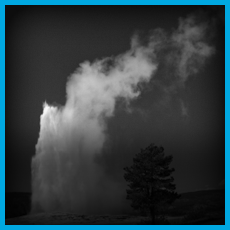OVERVIEW
Geothermal energy has been in use in the U.S. since our nation’s founding, and today every state uses it to some degree already.1 But only Hawaii, Alaska, and a handful of states in the Western U.S., use that energy to generate electricity.2 This is despite geothermal generation’s ability to produce electricity at a steady rate every hour of the day.3 Most of the geothermal heat sources are over tectonic activity and centralized in the underserved and power-thirsty West.4 There are also sizeable amounts of potential energy simmering under the surface of states like West Virginia, Louisiana, Texas, and Arkansas.5 These energy assets have not yet been maximized because the U.S. has provided inadequate resources or erected sizeable barriers to the development and roll-out of geothermal technology. In 2010, only 3.1 gigawatts of geothermal generation, roughly the same capacity as only 6 average-sized coal plants,6 had been installed in the U.S.7 But a few smart policy changes could open as much as 100 GW of new, clean energy to American consumers.8
ANALYSIS
Obstacles to optimizing geothermal power include the challenges of mining safely to depths of 10 kilometers, transmission and exploration barriers, and access to capital. But these impediments are worth trying to overcome. A recent study by MIT suggests that nearly 10% of our energy needs could be met by geothermal.9 That is roughly equivalent to all of our existing renewable resources today, including hydropower. Furthermore, most jobs created by geothermal projects would be in drilling, which do not require a college degree and can help balance the boom-bust cycle of employment in the oil and gas industries.10
Assuming some smaller nuanced policies are adopted to increase access to capital and exploration, the U.S. could see an increase of 1.6 GW of capacity, or a net increase of 50% in total geothermal capabilities. Working under this assumption, these new geothermal facilities could generate enough electricity to power at least 1.1 million homes,11 more than the entire state of Nebraska.12 Assuming these new geothermal turbines replaced coal, 1.6 GW of geothermal would eliminate as much as 12 megatons of CO2 equivalent emissions.13 Like other clean energy technologies, geothermal produces no conventional pollutants (like nitrogen and sulfur oxides, mercury, or particulate matter). Hence, building this additional geothermal capacity could remove as much conventional air pollutants every year as produced by about 4 average-size coal plants.14 The new geothermal projects spurred by these policies could also add over 2,500 jobs from cradle to grave.15
IMPLEMENTATION
Easing access to public lands and financing would provide a boost to the development of geothermal projects.






